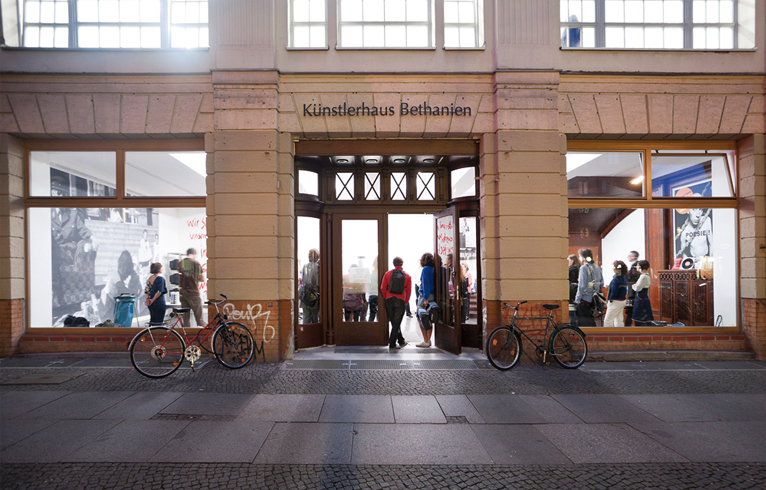THE RELOCATION OF KÜNSTLERHAUS BETHANIEN
| February 14, 2012 | Post In LEAP 12

Located in Berlin’s Kreuzberg district, Künstlerhaus Bethanien is an exhibition space, publishing organization, and center for international artist residency programs. Last year, the establishment moved from its former historical building to a new privately owned location. Every one of the past 38 years, Künstlerhaus Bethanien has offered 12-month studio residencies and exhibition opportunities to dozens of young artists, many of whom owe thanks to the institution for their first artistic accomplishments. Because of Künstlerhaus Bethanien, a lot of those artists have fallen in love with Berlin and never left the city. Singaporean artist Ming Wong, whose most recent project was showcased at the last Performa Art Festival in New York, also fell prey to the combined charm of the art center and Berlin: after he completed his residency in 2007, he moved to an apartment near the Künstlerhaus Bethanien, where he still lives today. This art service enterprise also used to offer lodging and creative space to many artists freshly arrived in Western Europe, such as Marina Abramović and her boyfriend Ulay (Uwe Laysiepen) at the beginning of the 1970s, as well as the Chinese artists Chen Zhen and Huang Yong Ping.
To understand why Künstlerhaus Bethanien attracts artists, two factors ought to be considered: one, its role as a free port for contemporary Western art in Berlin, and two, its location in the affordable, open-minded, and multicultural Kreuzberg district. For its first 30 years, the history of Künstlerhaus Bethanien was closely linked to the public hospital built by the Schinkel School in 1873 (many photos of previous artworks show the two striking Schinkel-style pillars of the exhibition space known as Studio III). In 2005, however, a group of left-wing radicals occupied the south wing of the Bethanien and, refusing to leave, destroyed the artworks in the exhibition hall, leading to a somewhat puzzling chapter in the history of the institution.
Movements like “Occupy Wall Street” might look major in New York, but they are hardly uncommon in Berlin, where they almost belong to the city’s tradition of struggle for art and culture. Although an institution such as Künstlerhaus Bethanien, hub of avant-garde art, became itself “victim” of the struggle, its occupation was also a unique kind of “experiment,” one that entered the records of Germany’s present political experience. Upon the occupation, the institution sought the police’s help but was told that Bethanien was not public property— there was nothing that could be done. The center then sought out the German Communist Party, who said that the situation was an example of the ideal society. Next, they sought the help of the Green Party, who called for round table sessions that lasted for a year and some months but failed to achieve anything. Meanwhile, Künstlerhaus Bethanien kept demanding the “intruders” to pay the water and heating bills, and its artists went so far as to split into two factions: those who resolutely opposed the occupation, and those who endorsed it enthusiastically. During that period, all sorts of creative projects correlated with the “illegal occupiers” also started to be carried out, but finally the time came for Künstlerhaus Bethanien to make the heartbreaking decision to move out of the building that had been representative of the Prussian dream of a modern state a century and a half before.
Now, the organization has settled in a newly whitewashed building on Kohlfurter Strasse. On the workshops’opening day this fall, the former peacefulness of the Arab district drew alternative guests and noises (inevitably there would be that artist who likes to play the bass of his speakers quite loudly out his windows, which just so happen to face the street). One of the works of one resident artist this year has also appeared on the cover of the preeminent KUNST Magazin. The artists that have worked here over the past 38 years, the works they have produced (especially exhibitions, performances and videos), and the later development of these artists undoubtedly make Künstlerhaus Bethanien an institution of remarkable pedigree, one that truly understands the significant influence of the art world.


